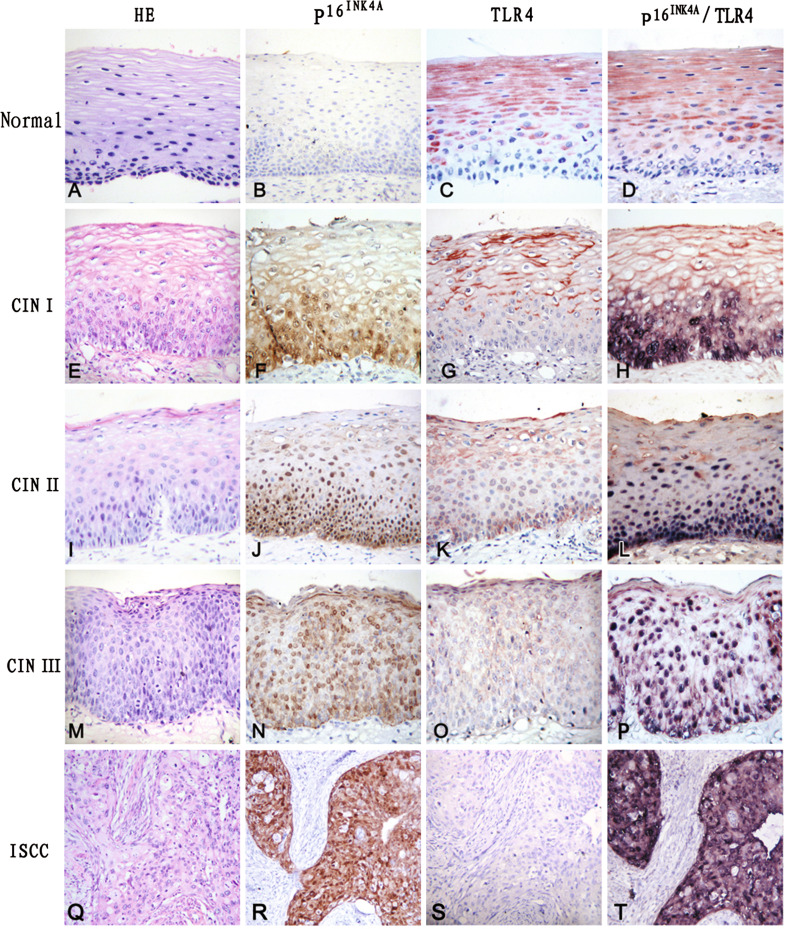Fig. 1.
Expression of TLR4 and  detected by immunohistochemisty. Hematoxylin and eosin (HE) staining showing that atypical hyperplasia is restricted within lower third (e), lower two-thirds (i), or exceeded over lower two-thirds (m) of squamous epithelium in CIN I, CIN II and CIN III, respectively, compared to normal cervical squamous epithelium (a). Cancer nests invaded into muscle tissue in ISCC (q). No
detected by immunohistochemisty. Hematoxylin and eosin (HE) staining showing that atypical hyperplasia is restricted within lower third (e), lower two-thirds (i), or exceeded over lower two-thirds (m) of squamous epithelium in CIN I, CIN II and CIN III, respectively, compared to normal cervical squamous epithelium (a). Cancer nests invaded into muscle tissue in ISCC (q). No  staining was detected in the control (b). Immunoreactivity of
staining was detected in the control (b). Immunoreactivity of  gradually increased from CIN I (f), CIN II (j) to CIN III (n), and
gradually increased from CIN I (f), CIN II (j) to CIN III (n), and  positive cells were diffusely distributed within the atypical hyperplasia tissue. Strong
positive cells were diffusely distributed within the atypical hyperplasia tissue. Strong  staining was observed in tumor epithelial cells of cancer nests in ISCC (r). In contrast to
staining was observed in tumor epithelial cells of cancer nests in ISCC (r). In contrast to  staining, TLR4 showed the strongest immunoreactivity in normal cervical tissue (c), and the staining intensity of TLR4 gradually decreased from CIN I (g), CIN II (k) to CIN III (o). No TLR4 immunostaining was observed in cells within cancer cell nests (s). Only TLR4 staining was observed in normal cervical tissue (d) with double immunostaining of TLR4 and
staining, TLR4 showed the strongest immunoreactivity in normal cervical tissue (c), and the staining intensity of TLR4 gradually decreased from CIN I (g), CIN II (k) to CIN III (o). No TLR4 immunostaining was observed in cells within cancer cell nests (s). Only TLR4 staining was observed in normal cervical tissue (d) with double immunostaining of TLR4 and  , and TLR4 staining was not observed within dysplastic proliferating cells of CINs (h, l, p), where
, and TLR4 staining was not observed within dysplastic proliferating cells of CINs (h, l, p), where  was positive. Strong
was positive. Strong  staining, but no TLR4 staining, was detected in the tumor cells of cancer nests (t)
staining, but no TLR4 staining, was detected in the tumor cells of cancer nests (t)

